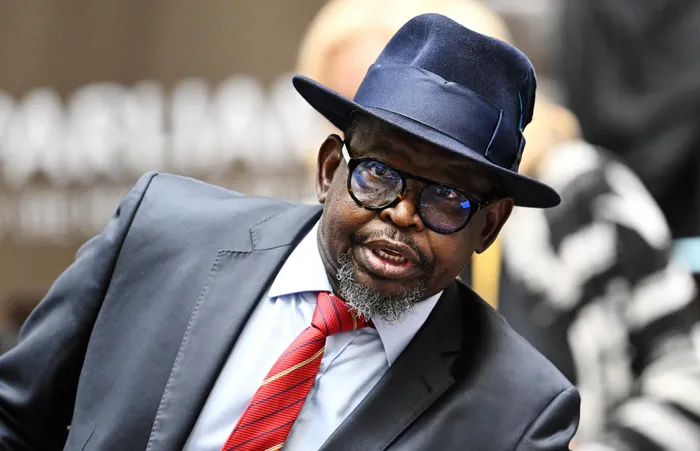Fiscal slippage deepens as South Africa’s spending outpaces revenue, forcing higher borrowing

Finance Minister Enoch Godongwana faces a tight balancing act in the mini-budget.
Image: GCIS
South Africa’s finances are again under pressure, with government spending more than it is bringing in – a problem economists call fiscal slippage.
It means the gap between what the state earns and what it spends is getting wider, forcing more borrowing to fill the hole.
When the national budget was finally passed in May – after two failed attempts – government had already lost a major source of extra income.
It had planned to raise value-added tax (VAT) from 15% to 15.5% this year and again to 16% next year but could not get all members of the Government of National Unity (GNU) to agree.
A later proposal for a smaller 0.5 percentage point VAT increase was also dropped in April after several court challenges.
By not going ahead with the increase, government will collect about R75 billion less in taxes over the next few years, according to a National Treasury statement made six months ago.
Treasury also had to adjust tax brackets for inflation so that millions of South Africans would not pay more personal income tax, further reducing expected revenue.
Annabel Bishop, Investec’s chief economist, said the Medium-Term Budget Policy Statement (MTBPS), known as the mini-budget, which is set to happen on November 12, is “not expected to see any tax changes but provide revenue and expenditure updates”.
Bishop said the numbers so far this year show that “expenditure has dropped, to 41.4% of budget, versus 43% of budget this time last year”.
Even so, South Africa is still spending more than it earns. “The outcome for the current financial year to date shows revenue at R742 billion for the first five months of 2025/26, versus budgeted revenue for the full year at R1 949 billion, and five twelfths of this R813 billion, which means the first five months are below budget.”
Bishop did note that there is still September’s data to consider in National Treasury’s equations.
Spending, meanwhile, is running ahead. “Year to date R957.3 billion has been spent out of R2 310.7 billion, with five twelfths of this R962.8 billion, and so expenditure is over budget for the year so far,” she said.
This leaves the country with a growing shortfall between income and spending. “Currently, on the available data, the fiscal deficit is R215.2 billion, with the budgeted deficit for the 2025/26 year [at] R361.3 billion… The fiscal deficit is much wider than currently budgeted for to date.”
Even if the numbers improve slightly once September’s data is released, Bishop said “revenue will have to rise substantially, and expenditure fall in September, from August’s levels, in order for South Africa’s provisional financing figures to move towards half of the budgeted deficit by half of 2025/26.”
Still, Bishop said the situation is not as bad as last year.
“While the government finance figures are not yet encouraging, they do point to a less worsening versus budget compared to last year, when borrowings were increased in order to fund expenditure in a poor revenue year.”
Bishop said, “the fiscal trajectory has been one of slippage, but revenue flows are also uneven between months and there is scope for some catch up on the revenue front to prevent the fiscal deficit from exceeding budget”
Last year’s mini-budget had to include several unexpected expenses, such as the repayment of Sanral debt, rollovers and defence troop deployment as well as extra allocations for the Presidency, Department of International Relations and Cooperation and the Department of Justice and Constitutional Development in legal costs for South Africa's case in the International Court of Justice.
Additional spending went to emergency funds related to the South African National Defence Force troop deployment in the Democratic Republic of the Congo and an increase in the COVID-19 social relief of distress grant.
An amount of R60 million is also added for costs related to the initial activities of South Africa's G20 Presidency.
A so-called dry run for the G20 summit to be held this month happened over the weekend, bringing traffic to a standstill in Johannesburg as several freeways and other roads were closed.
With tax hikes now off the table, Bishop said financial markets will be watching “the proposed debt and deficit figures in this year’s MTBPS very closely, along with any additional allocations for expenditure”
Markets reacted negatively earlier this year when details of the February and March budget drafts were leaked, pushing South Africa’s ten-year bond yield up to 10.97%. It has since fallen to 9% following the May budget and lower inflation.
National Treasury and the Reserve Bank have also been working on narrowing the inflation target range from between 3% and 6% to 3%.
Bishop said, “the official change would come from National Treasury, with the MTBPS an opportunity to do so”.
IOL Business